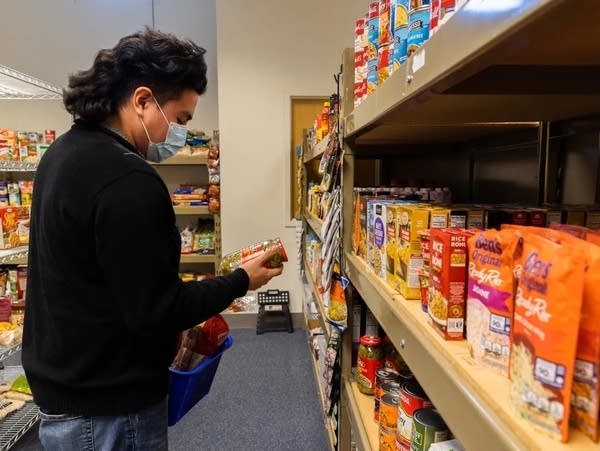More Minnesotans will soon qualify for food assistance program
About 1,400 more households will be eligible for the Supplemental Nutrition Assistance Program (SNAP)

Go Deeper.
Create an account or log in to save stories.
Like this?
Thanks for liking this story! We have added it to a list of your favorite stories.
Updated: June 23 | Posted: June 14
The Minnesota Legislature increased the income limit during the last session for the Supplemental Nutrition Assistance Program (SNAP) from 165 percent of the federal poverty level to 200 percent. This means households of three making $3,600 or less per month will be able to access temporary food benefits in the fall.
The decision comes at a time when households continue to face higher grocery prices due to inflation. Minnesota is the 20th state to make this change.
Peter Woitock, a government relations specialist with Hunger Solutions, advocated for the change. He joined MPR’s Tom Crann to discuss the SNAP program.
Hear the full conversation by using the audio player above or reading the transcript below. It has been lightly edited for clarity and length.
Turn Up Your Support
MPR News helps you turn down the noise and build shared understanding. Turn up your support for this public resource and keep trusted journalism accessible to all.
Why was it necessary to bump up the income eligibility limit?
Many people were above the income level to qualify for SNAP but they were still struggling to put food on the table. One individual mentioned they were disqualified by about $32 total for the year.
So, we just looked into the issue further and realized that there's federal regulations that allow states to do this and raise it up to 200 percent of poverty. And we wanted to follow those 19 other states that were currently doing this.
Generally, for a family of three that comes to $3,600 a month. How many more households will now be eligible or able to access SNAP benefits with this increase?
It'd be about 1,400 other households, according to the Department of Human Services. But this really helps working people [who] don't earn enough to meet their needs, but currently earn too much and who have high costs, expenses like housing or child care, that leave them with very few resources to make ends meet.
SNAP is a federal program but where will this money come from to meet the greater number of people who will now be eligible? Is it federal money? Is it state money?
All of the benefits are federal money and then there's a very small cost to the state for administration to make the change.
Now, your work is focused on ending hunger and food insecurity here in Minnesota. What impact have the recent inflationary times had on these efforts?
We saw during the early part of the pandemic a lot of policies that were put into place to help put food on the table for those who are struggling. But many of those policies and waivers were temporary.
We've seen with those phasing out that we've already seen a rise in food shelf visits across the state. They've been up 39 percent since January of 2022. That's quite an increase and a lot that food shelves and many programs across the state have to deal with right now.
What do you think people need to know about the importance of the SNAP program here in Minnesota?
SNAP is really there as a temporary assistance for families. It's that first line of defense.
It [also] brings in revenue to the local economy. I think in 2020, it served over 412,000 individuals so that was about $780 million of federal funds that came into the state.
[And] it relieves pressure on a lot of the food shelves and food providers across the state.
What would be the next step for people listening who make under $3,600 a month and who want to take advantage of this?
They could reach out to us at Hunger Solutions. They could call our Minnesota Food HelpLine. There's also the state website to apply for SNAP as well.
Correction (June 23, 2022): A previous version of this article stated an incorrect start date for the new eligibility threshold. The story has been updated.


